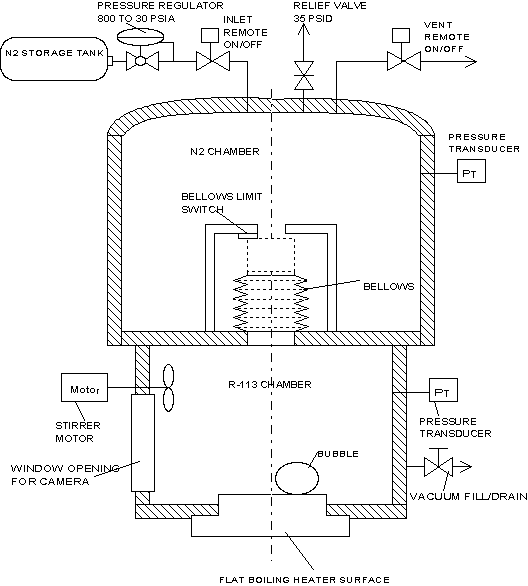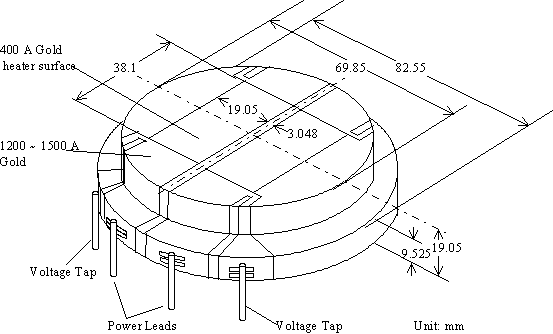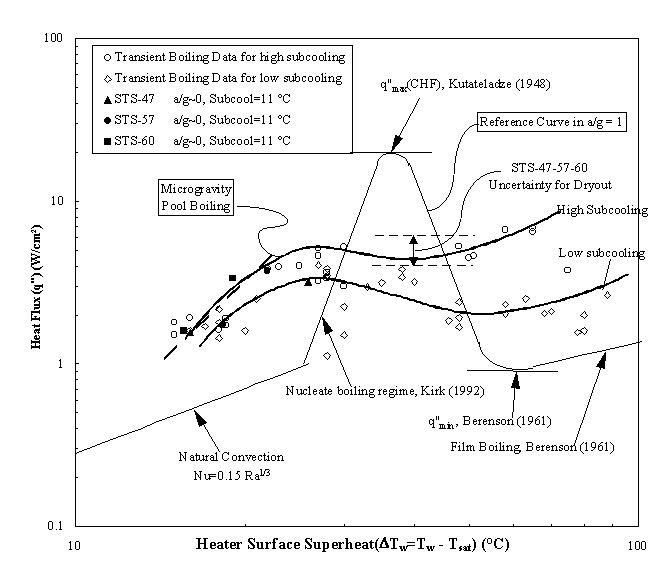
|

|

The figure above is a schematic diagram of the test vessel, consisting of R-113 and nitrogen (N2) chambers. The R-113 chamber has internal dimensions of 15.2 cm Dia. by 10.2 cm High, and includes a gold film heater on a quartz substrate, a pressure transducer, thermistors, and stirrer. The stirrer functions to provide a timely uniform fluid temperature between each test. The pressure transducer measures the system pressure with an uncertainty of 0.345 kPa, while thermistors measure the liquid temperatures adjacent to the heater surface at distances of 1, 5, 10 mm, and at various other locations, with a total uncertainty of 0.06 C. The nitrogen chamber is used to maintain the desired system pressure. System subcooling is obtained by increasing the system pressure above the saturation pressure corresponding to the initial liquid temperature. In the absence of buoyancy, an initially motionless liquid remains stagnant upon heating until the onset of boiling, and the temperature distribution in the liquid at the onset of boiling can be determined from a conduction heat transfer analysis.


It appears that long term steady state nucleate boiling can take place on a flat heater surface in microgravity with a wetting liquid under conditions in which a large vapor bubble somewhat removed from the heater surface is formed, which acts as a reservoir to remove the bubbles from immediate vicinity of the heater surface. The steady nucleate boiling heat transfer is significantly enhanced in microgravity compared to that in earth gravity.
Surface tension has an important role in producing dryout and/or rewetting on a heated surface. The detailed circumstances describing this remain to be explored further, but the heat flux at which dryout occurs is considerably less in microgravity than in earth gravity.
Using the quasi-steady data obtained during the periods in which some significant portions of the heater surface were dried out it was possible to construct two distinct composite approximate microgravity pool boiling curves for R-113, one for the higher level of subcooling and one for the lower level of subcooling. This is compared with a Reference Curve for pool boiling at a/g=+1, constructed from all available data and correlations deemed to reasonably represent the circumstances present. The microgravity pool boiling curves bear some resemblance to the Reference Curve, although the maximum heat flux (critical heat flux) and the minimum (film boiling) heat flux is also reduced considerably.

For questions or comments, email pfahey@engin.umich.edu